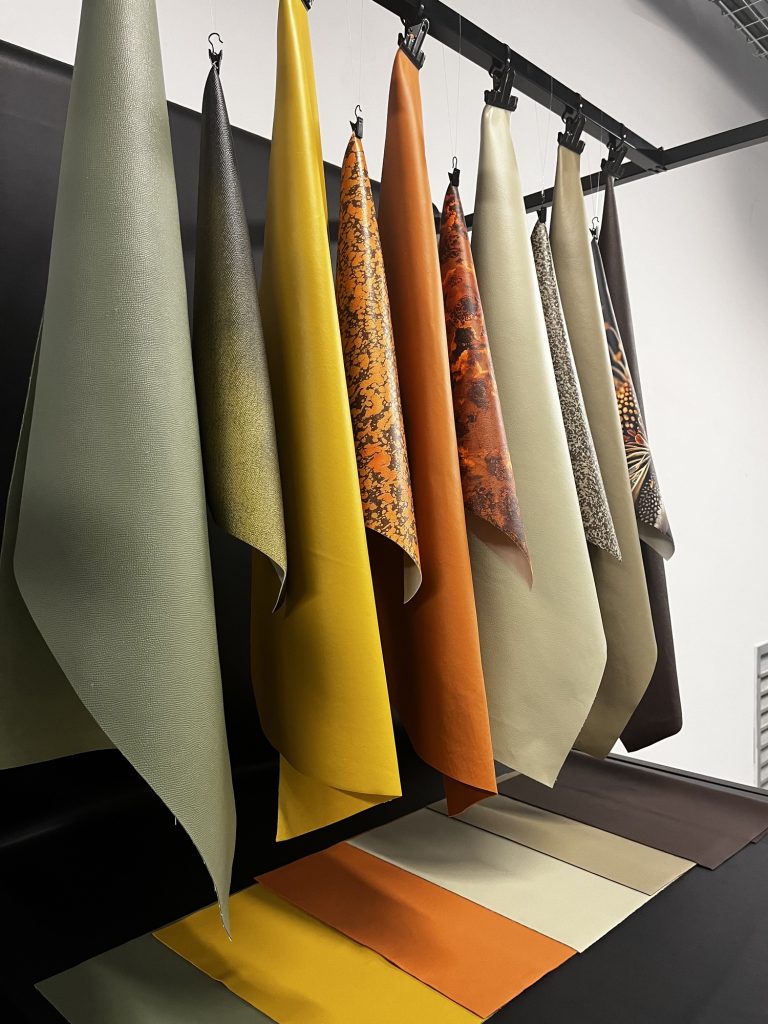Suzanne Lee, a visionary fashion designer hailing from Brooklyn, New York, is on a mission to redefine the future of fashion as the founder and CEO of Biofabricate. With her roots in Central Saint Martins College of Art and Design, she pioneered growing microbial biomaterials for fashion with her Biocouture™ Project over 20 years ago. Join us as she shares her thoughts on technological advancements, biology innovations and the future of our planet.
Could you share more about your journey as a biomaterial pioneer and how you’ve witnessed the evolution of microbial materials for fashion since 2003?
Suzanne Lee: My background is primarily in fashion design, not technical fields. I studied fashion and textiles at Central St. Martins. Despite that, I’ve always been somewhat of a sci-fi enthusiast. My journey into biomaterials and biotechnology began when I was researching a book commissioned by Thames and Hudson in 2002. The book focused on the future of fashion, not just the current or upcoming trends, but what fashion might look like in 10, 20 or 50 years. During this research, I interviewed various scientists and engineers to explore new materials and manufacturing processes with potential applications in fashion.
One of the people I met was a biologist who completely changed my perspective. He suggested that instead of raising animals for their skin, cultivating crops like cotton or relying on petrochemicals, we could harness biology itself. We could engineer living organisms to produce fibres. This conversation sparked a vision in my mind: could we grow a dress in a vat of liquid? The biologist confirmed it was possible, and it blew my mind. For the past two decades, this concept has been the focus of my work and passion. Nearly 25 years ago, I envisioned a future where biology would replace traditional materials. I received government funding in the UK to explore the feasibility of growing clothing using bacteria. I coined the term Biocouture™ to describe this fusion of biology and high fashion. Although it garnered significant media attention, the fashion industry showed little interest at the time.
Despite working part-time in fashion while seeking funding to develop this project into a business, sustainability and fashion startups weren’t hot topics 20 years ago. It seemed like a far-fetched idea. It’s amusing to me now, to see numerous startups pursuing similar concepts, receiving funding and gaining traction with fashion brands, all within the sustainability discourse. Reflecting on the past 20 years, it’s clear how what once seemed outlandish has become sensible and desirable. Every innovation has its time.
h: As the founder of Biofabricate, what inspired you to establish a company focused on driving sustainable biomaterial innovation across various sectors?
SL: I spent about 10 years being deeply involved in Biocouture™, trying to explain its significance to brands, engaging with investors and attending numerous science conferences where groundbreaking research in this field was underway. Often, I found myself as the only designer present, feeling overwhelmed by the scientific details that, while crucial, didn’t necessarily require my expertise. It struck me that while the science being developed had the potential to reshape our world, it lacked creative input. There was a gap that needed bridging. After experiencing my own frustration in such settings, I realised the necessity for an event that could bring together scientists, creatives, investors and brands under one roof. What if they could all collaborate and exchange ideas in the same space? That was the initial spark behind the creation of Biofabricate. I had created a network of friends involved in biomaterial research, alongside connections in the fashion industry who were largely unaware of each other’s work. I saw an opportunity to connect these disparate groups.
In 2014, with this vision in mind, I decided to take action. I organised an event where all these individuals could come together and share their projects and insights. It was an experiment, but it exceeded expectations. What began as a single annual summit evolved into something akin to a festival of innovation. People were so engrossed in discussions and networking that they didn’t want to leave at the end of the day.
After dedicating a decade to Biocouture™, I ventured to the US and joined a startup called Modern Meadow in New York. I founded Biofabricate the same year. Biofabricate’s mission is clear: inspire, attract investment and expedite the integration of biotechnologies into mainstream industries, particularly fashion. I continued organising the event annually during my job at Modern Meadow. However, upon leaving the company in 2019, Biofabricate became my primary focus. It evolved from a summit into a multifaceted initiative, offering consultancy to startups and brands, collaborating with investors and encouraging connections across the industry.
Its foundation stemmed from recognising the immense potential of biology to revolutionise various sectors and the urgency to cultivate an innovation ecosystem that prioritises sustainability and human well-being.
h: Given your background as Chief Creative Officer of Modern Meadow, how has your experience shaped Biofabricate’s approach to design-led events and biomaterial product prototyping?
SL: When I joined Modern Meadow, it wasn’t about conforming to a typical biotech approach; in fact, I was hired precisely for my design-centric perspective. So working at Modern Meadow did not shape my design approach, I already had it figured out. The CEO recognised the value of having a designer on the executive team to infuse the company’s vision with a strong design presence. Consequently, I established a design team within a biotech company, comprising both textile designers and biomedical engineers. This collaboration, where scientists and designers worked side by side in the lab, was the first to exist.
My background in fashion brought a lot of knowledge in materials and manufacturing processes, which proved invaluable in our product prototyping. Drawing from my fashion industry experience, we applied design principles to the biotech environment. This allowed us to experiment with materials and prototype various products.

Photography by SHARON RADISC

Photography by ROBERT LESLIE

